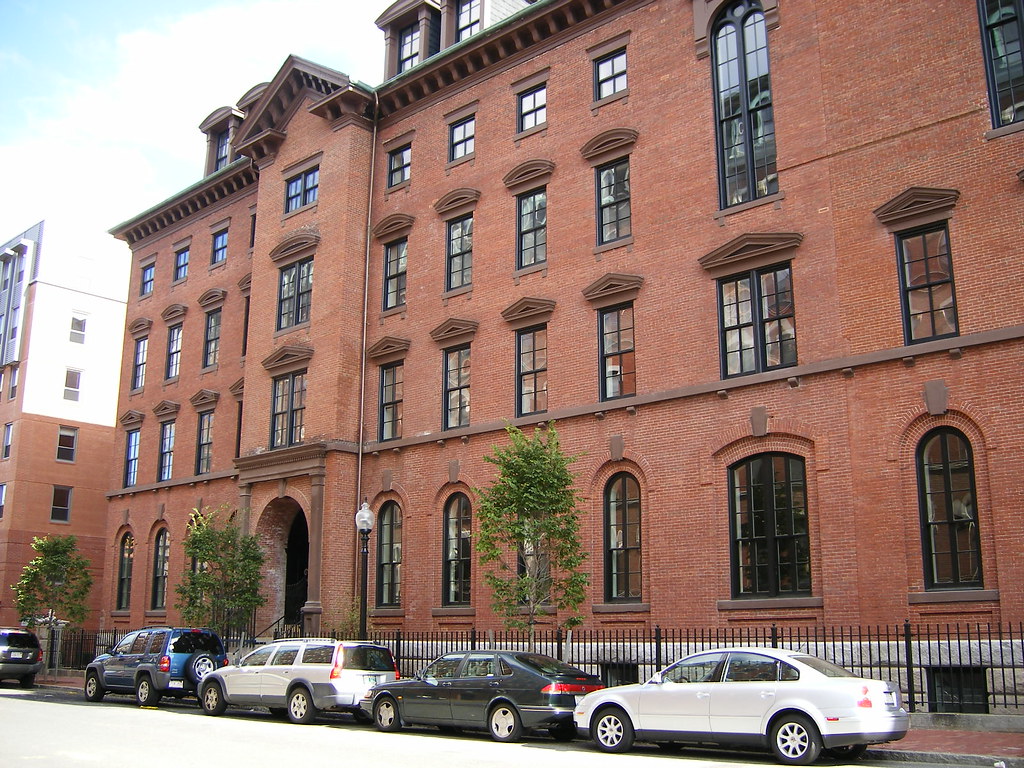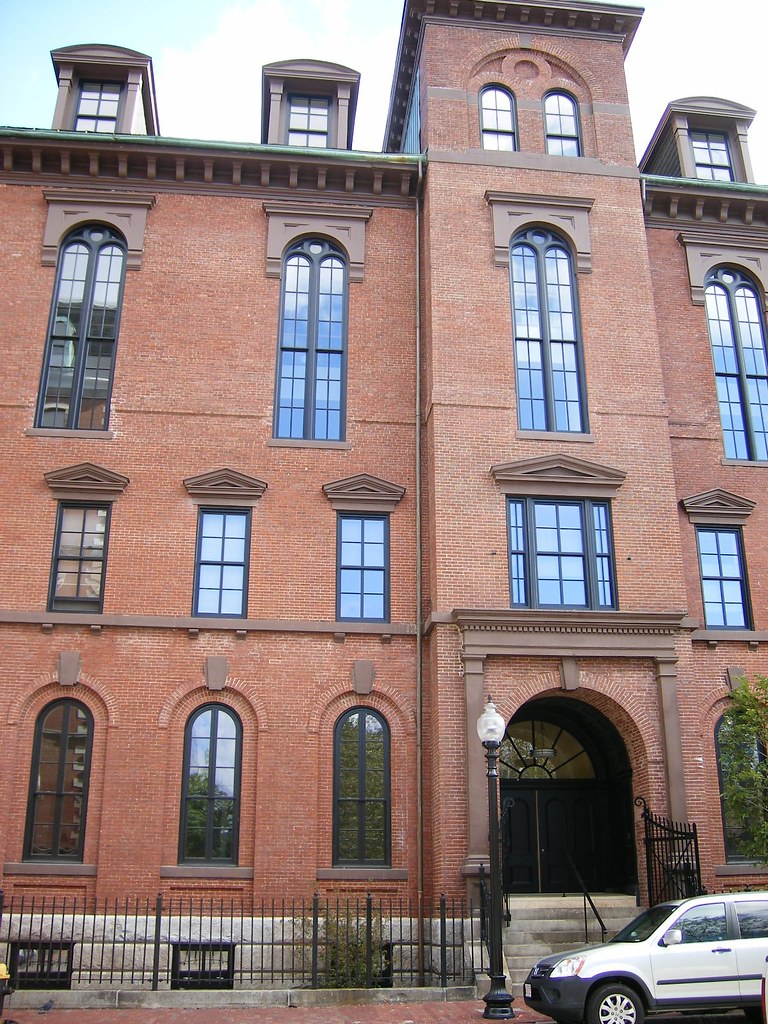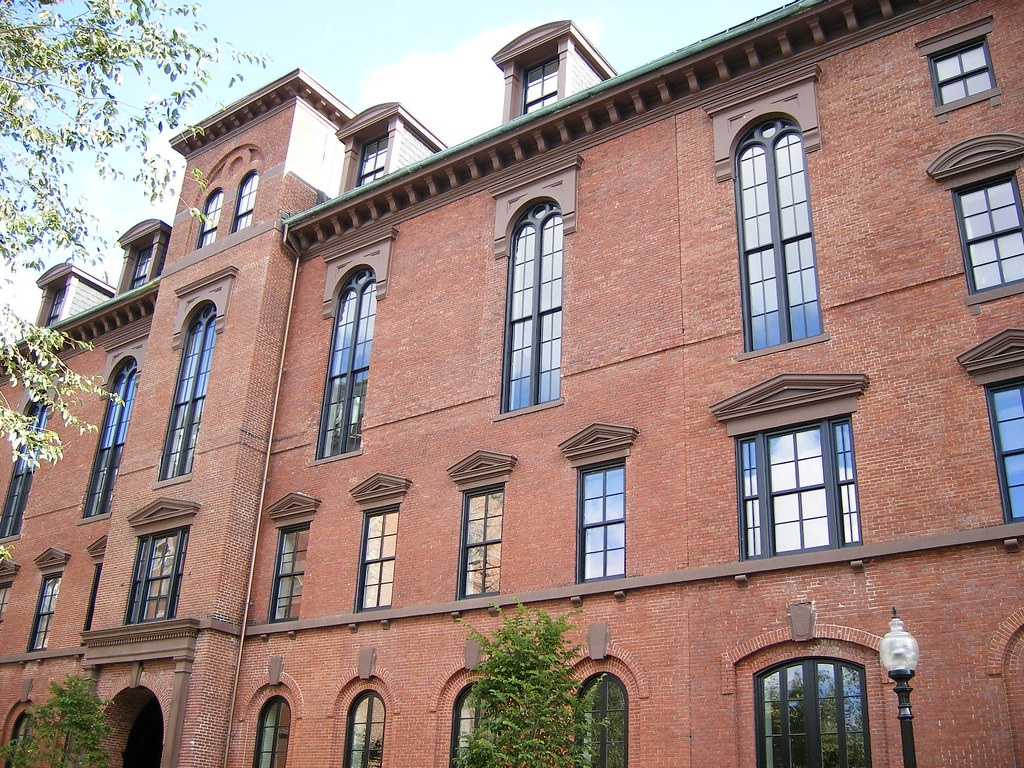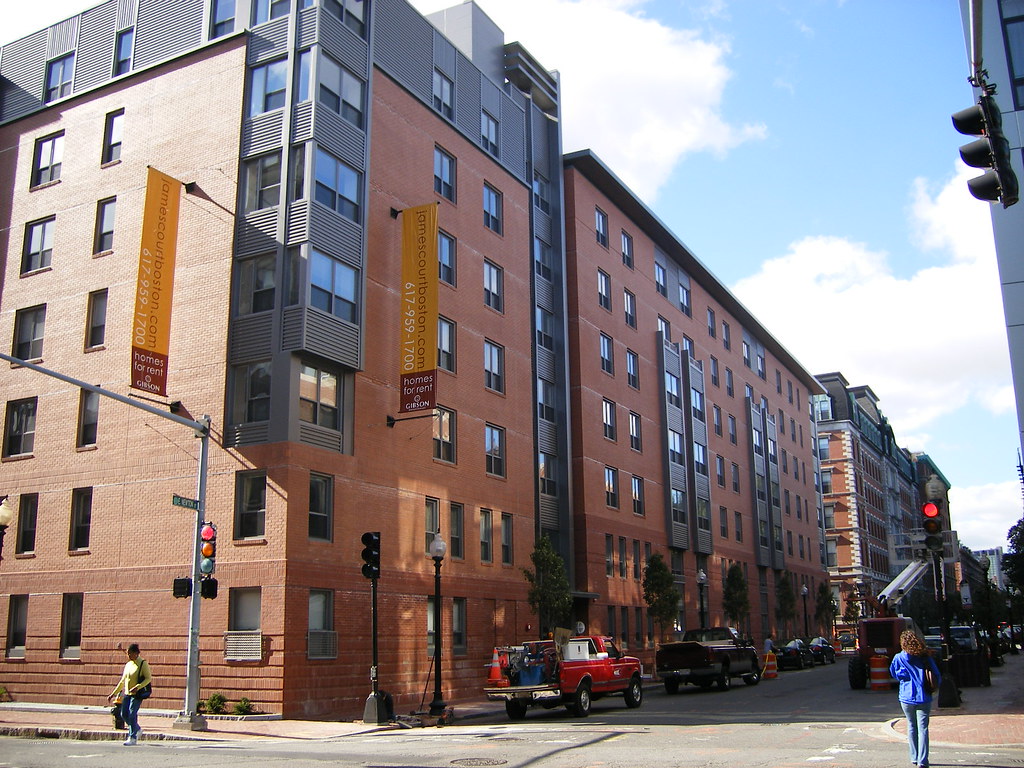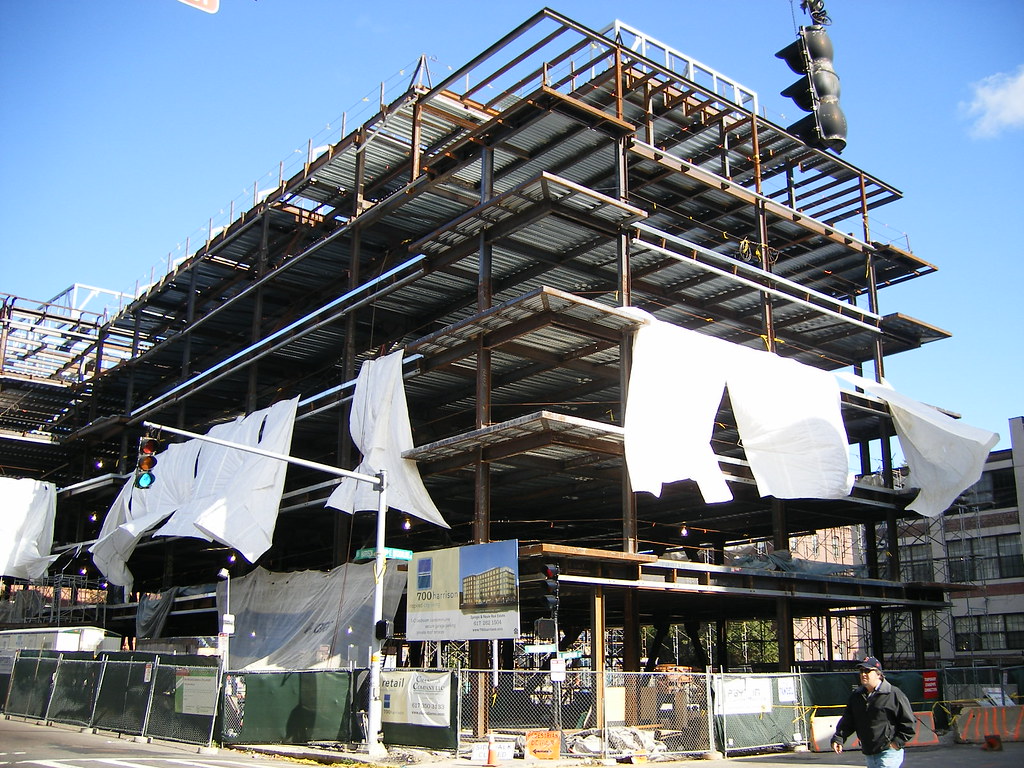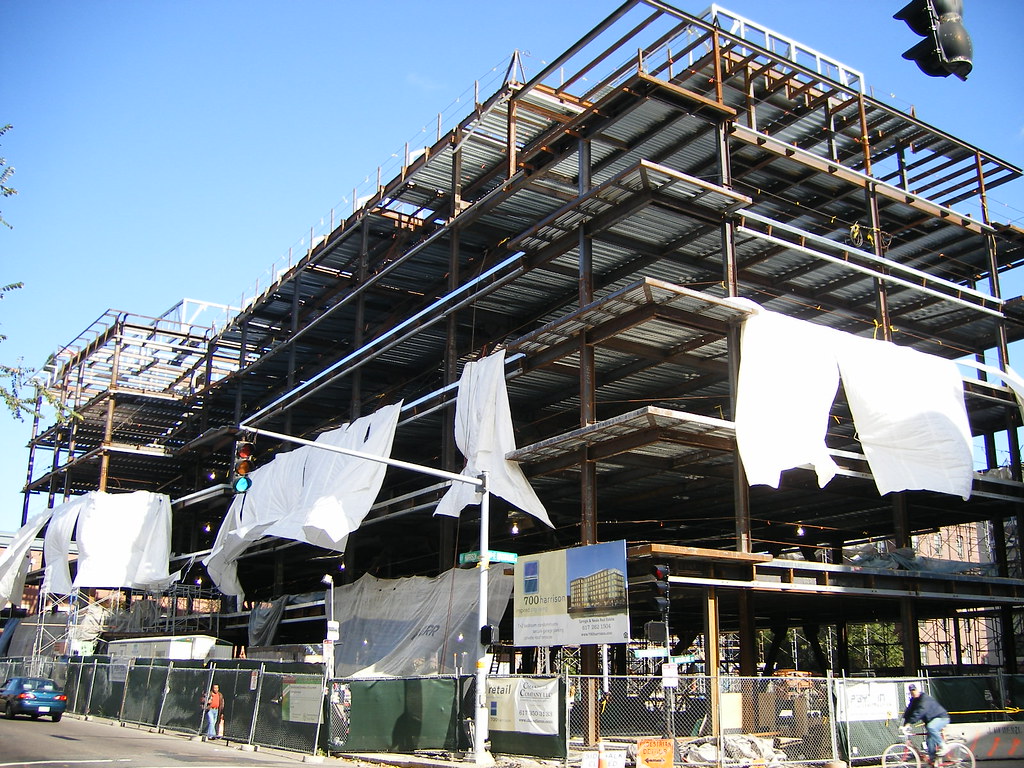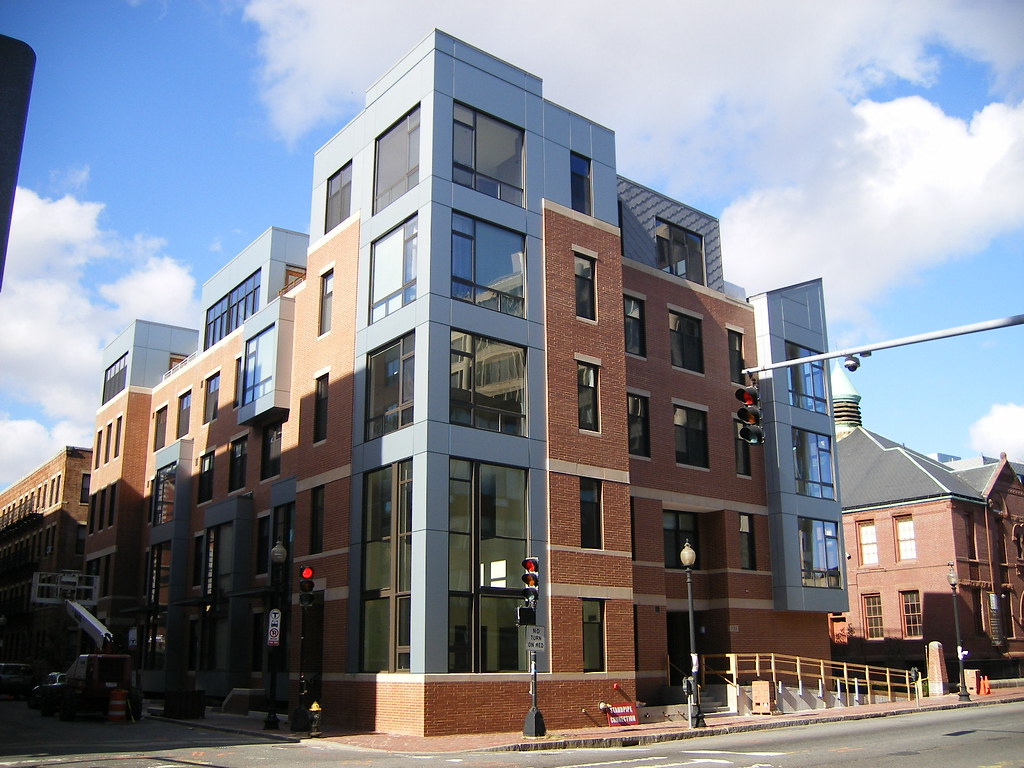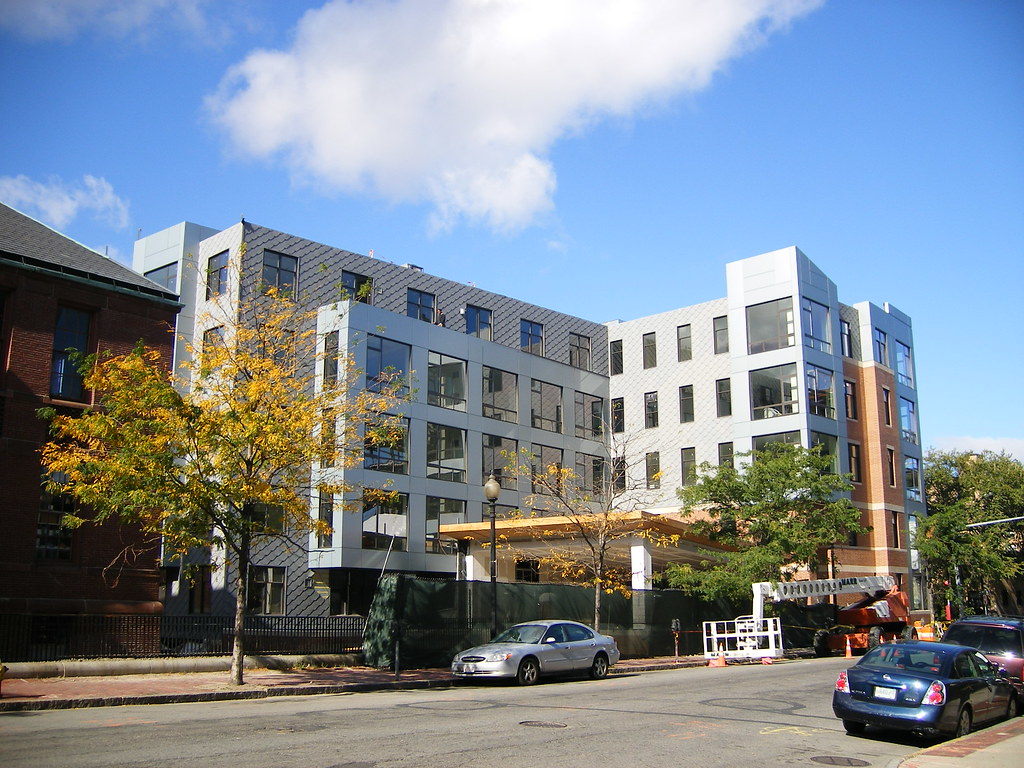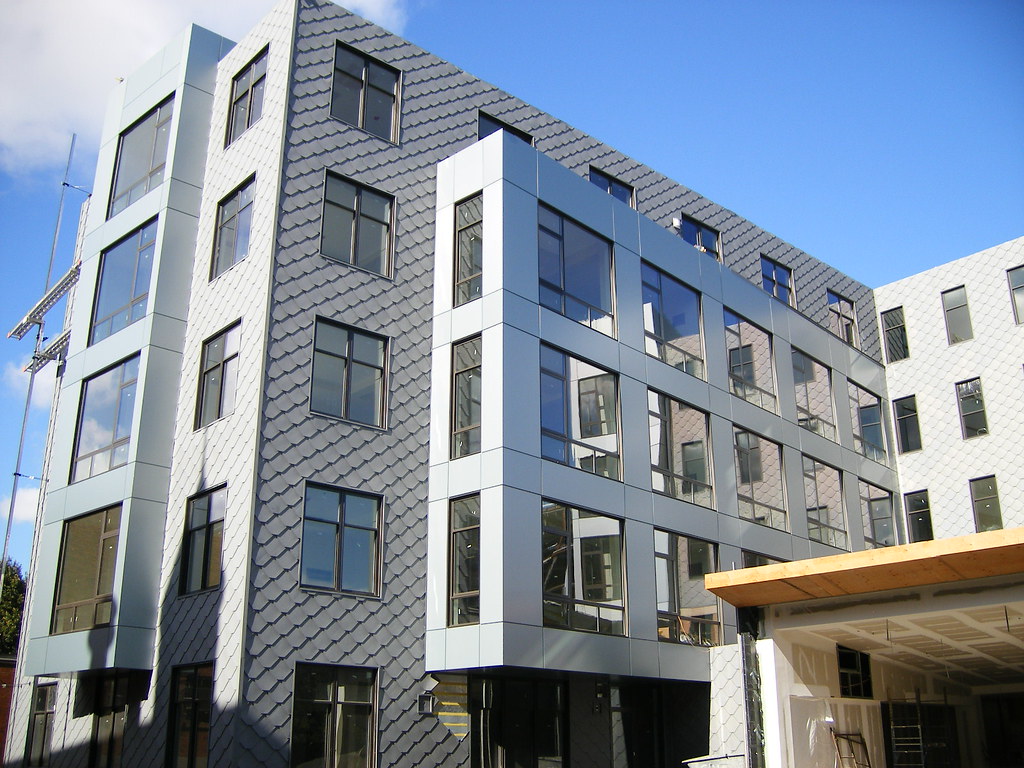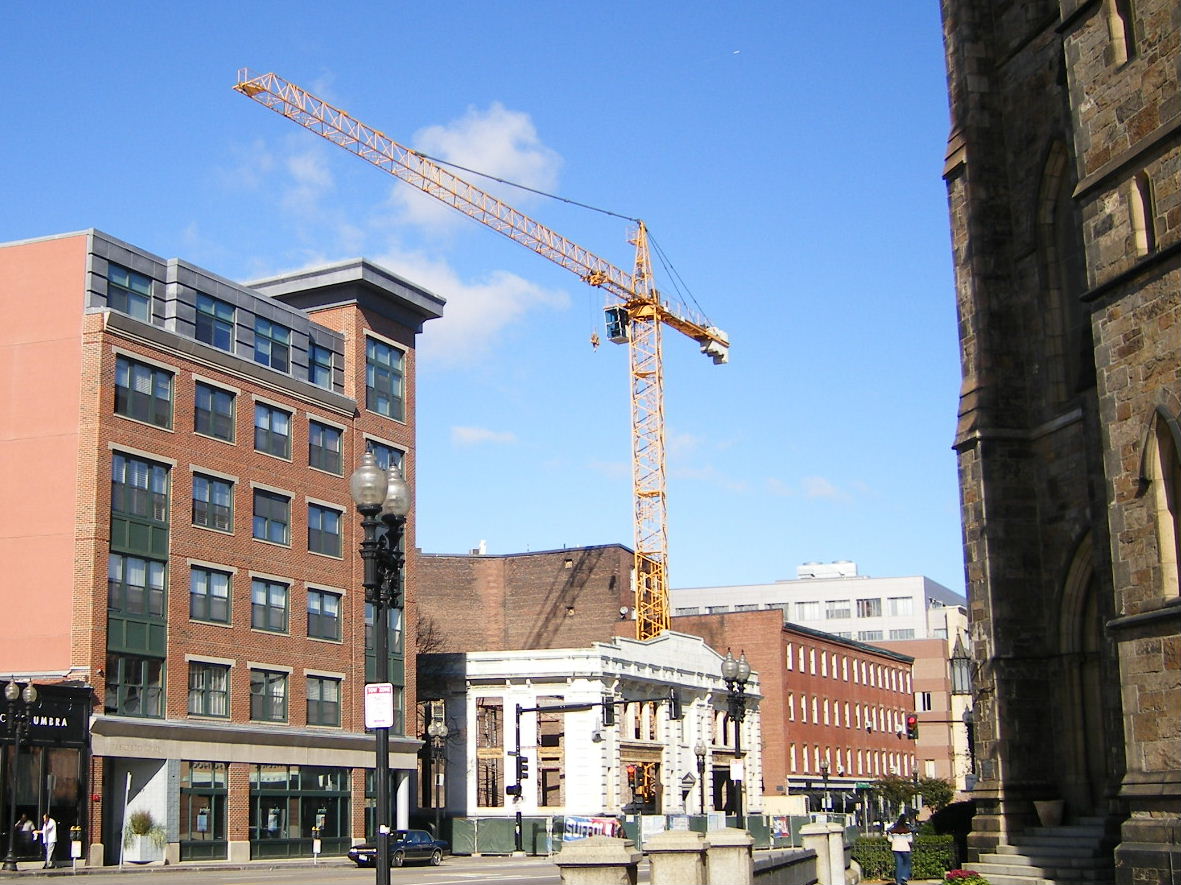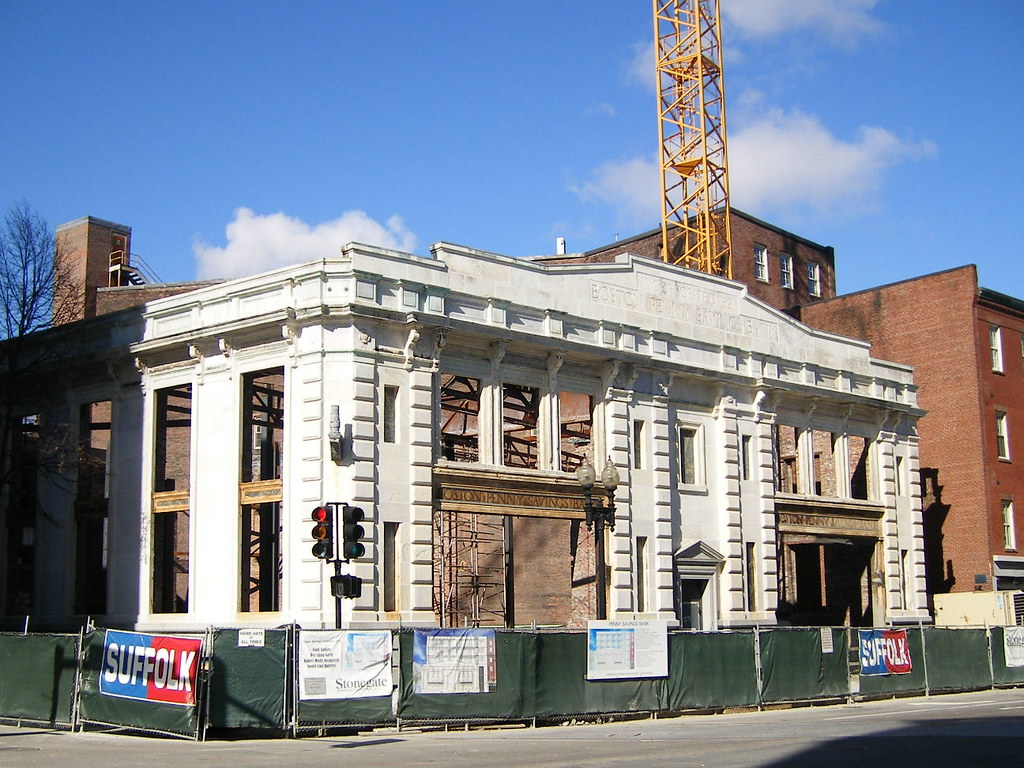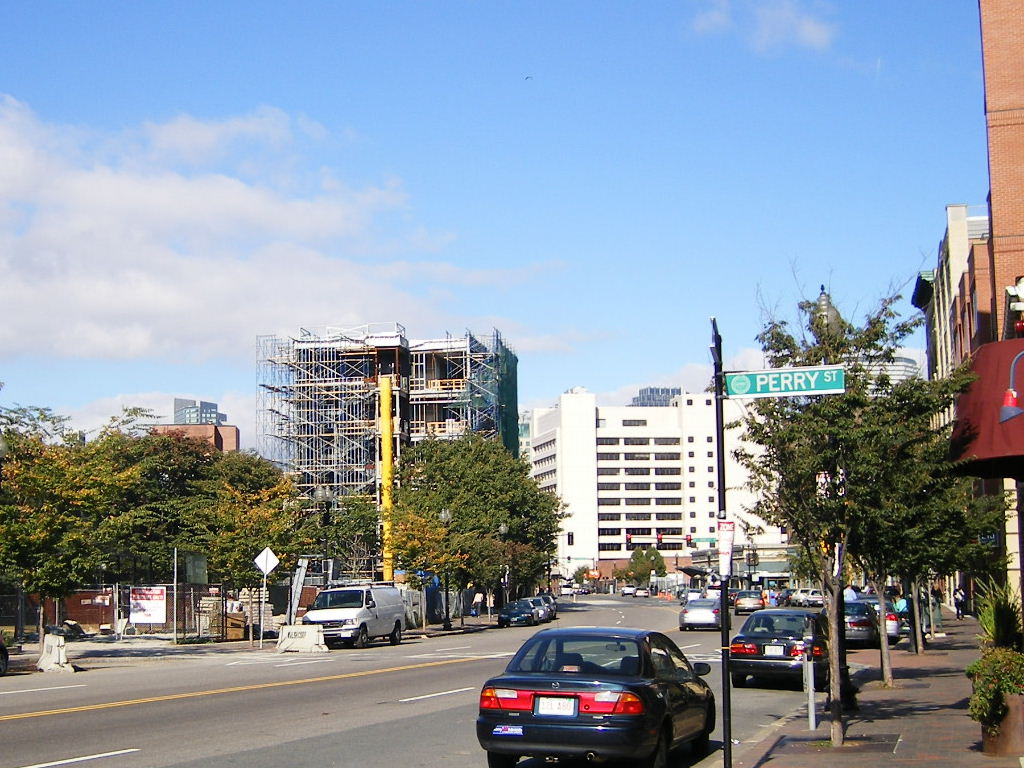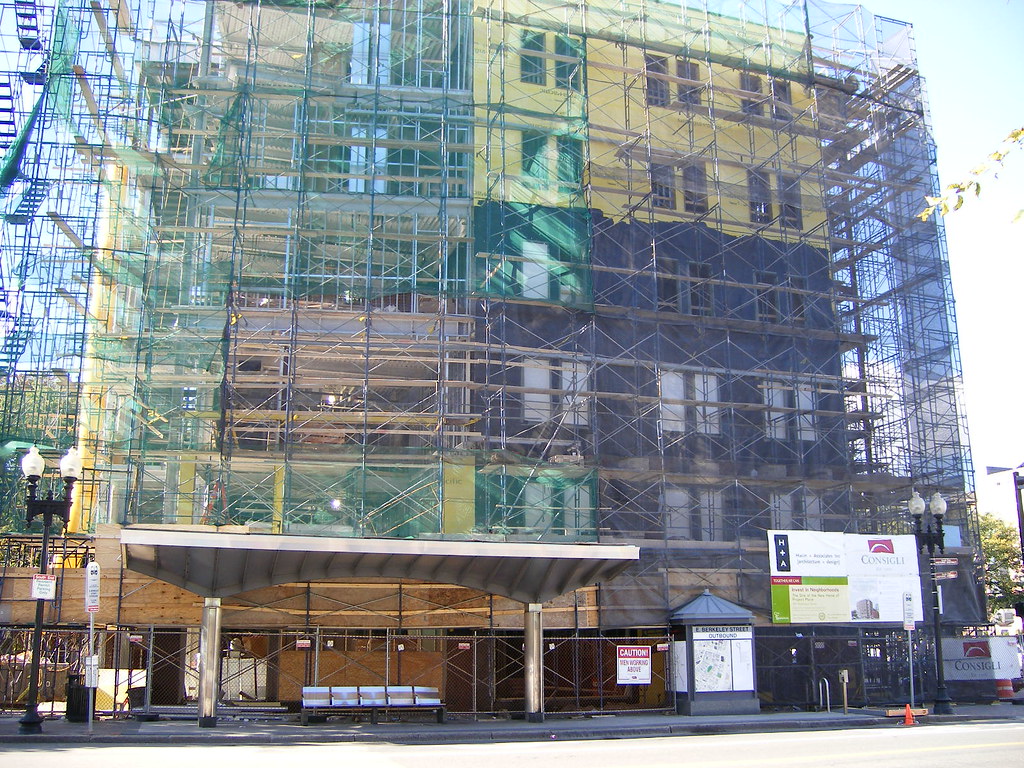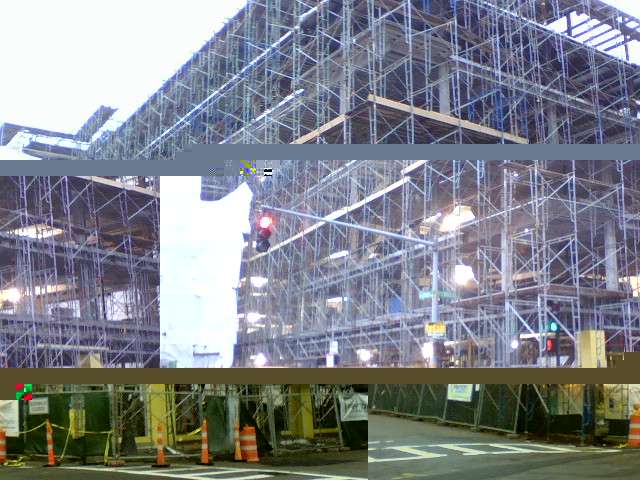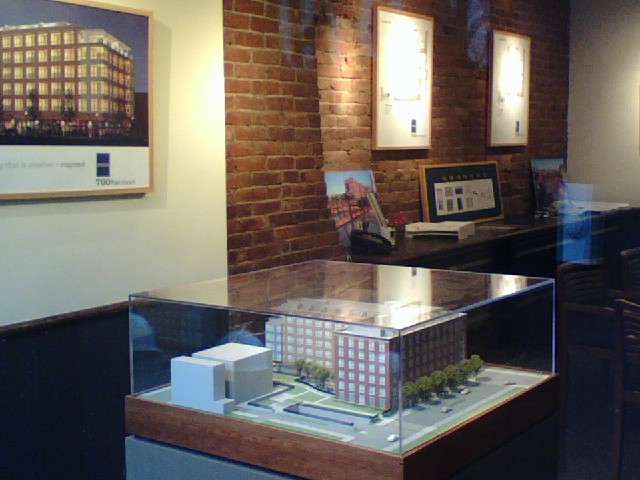You are using an out of date browser. It may not display this or other websites correctly.
You should upgrade or use an alternative browser.
You should upgrade or use an alternative browser.
South End Infill and Small Developments
- Thread starter xec
- Start date
- Joined
- May 25, 2006
- Messages
- 7,033
- Reaction score
- 1,865
Wow, those look really good! Save for the lack of street level retail. Other than that they look great. Reminds me of the newer areas I saw in San Francisco. Modern yet respectful of its surroundings.
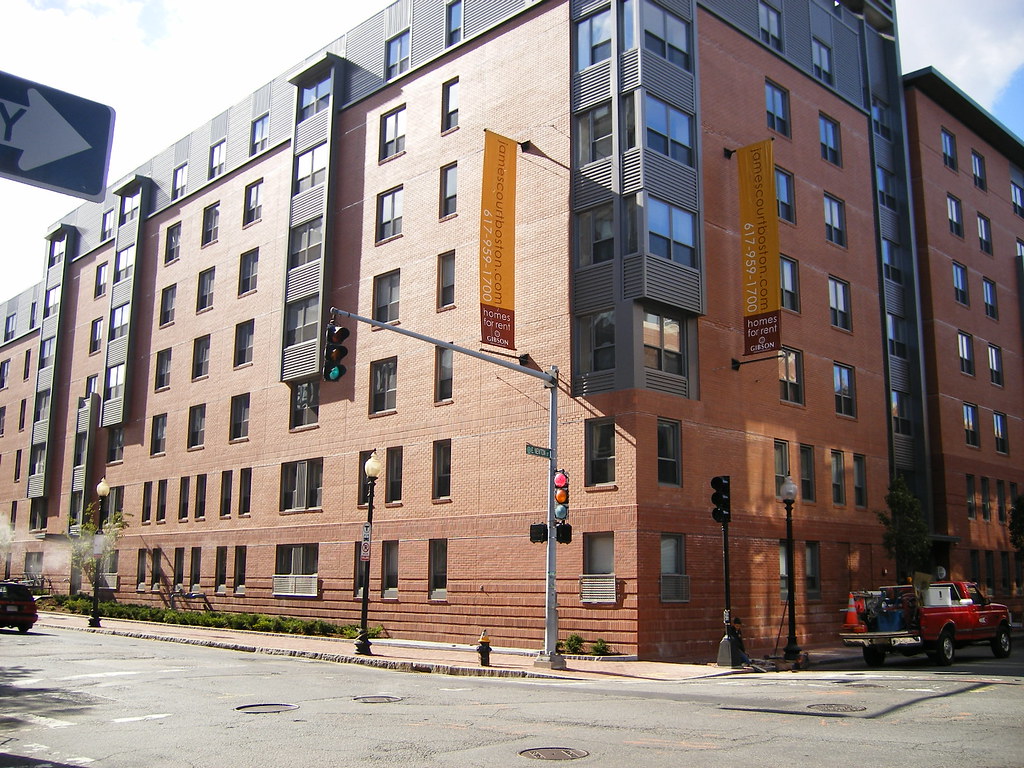
This one fails both top and bottom.
Bottom is blank and offers nothing to the pedestrian. Foundation planting is a laugh. Where are the shops? I know...the zoning.
Top doesn't even have the decency to slope back like a genuine mansard. A mansard is a faux pitched roof to begin with, and this one's a faux mansard. Faux faux...
Nice pics, xec.
bosdevelopment
Active Member
- Joined
- May 26, 2006
- Messages
- 727
- Reaction score
- 2
Nice camera. You can make out each individual brick.
kz1000ps
Senior Member
- Joined
- May 28, 2006
- Messages
- 8,975
- Reaction score
- 11,754
Thank goodness the days of installing new double-hung windows in old buildings that lack any individual panes (whether real or just for decoration) are over with. Nothing sucks the life from an old structure more than having blank, dark windows put in. Quincy Market is a prime example of this.
And concerning James Court, what is the name of the condition the bricks are (already!) showing, with the white stuff appearing near the expansion joints? I know it's something to do with moisture, and that the Stata Center is also victim of it.
And concerning James Court, what is the name of the condition the bricks are (already!) showing, with the white stuff appearing near the expansion joints? I know it's something to do with moisture, and that the Stata Center is also victim of it.
quadratdackel
Active Member
- Joined
- May 26, 2006
- Messages
- 145
- Reaction score
- 0
As a pedestrian, I totally agree on the shops comment. But, as someone who didn't know what a mansard is, I didn't realize that the roof didn't look right. Sure, it could have been more decorative, but slope? That seems kinda picky.ablarc said:Bottom is blank and offers nothing to the pedestrian. Foundation planting is a laugh. Where are the shops? I know...the zoning.
Top doesn't even have the decency to slope back like a genuine mansard. A mansard is a faux pitched roof to begin with, and this one's a faux mansard. Faux faux...
kz1000ps
Senior Member
- Joined
- May 28, 2006
- Messages
- 8,975
- Reaction score
- 11,754
didn't know where else to put this
The Globe said:Breaching Mass. Ave.
Gentrification that touched the east side of Boston's South End is finally expanding across an imaginary dividing line towards a once neglected neighborhood.
By Matt Viser, Globe Staff | January 14, 2007
When he renovated his soul food institution Bob the Chef's, Darryl Settles made one other change to the restaurant that also spoke volumes about changes in that portion of Boston's South End: he renamed it Bob's Southern Bistro.
"Our clientele has changed, and I'm not saying that's good or bad," said Settles . "But when a concierge says 'Bob the Chef's,' it sounds like a small place that's not very trendy. If they say 'Bob's Southern Bistro,' it has a different meaning."
The Columbus Avenue restaurant is on the "other" side of Massachusetts Avenue, a gritty neighborhood that until recently had escaped the forces of gentrification that have made the main part of the South End one of the most stylish -- and expensive -- sections of the city.
It used to be that Massachusetts Avenue acted as a dividing line. But now developers are breaching the bulwark, chasing opportunities in the neighborhood's cheaper -- and more rundown -- real estate, laying foundations for upscale projects in the direction of nearby Dudley Square.
The trend is causing subtle shifts, both physical and cultural. Sidewalks are cleaner, some buildings painted in softer colors. But some of the old haunts that give the neighborhood its character, as well as some of the residents themselves, may not last once condos start to sell for nearly $1 million.
"Eventually that liquor store and that club over there, they will close down and they'll become a Starbucks," said Shawn Johnson , 37, a lifelong resident of the South End. "It's this slow creeping process that doesn't really dawn on you. But everything is changing, and a lot of white people are going to be coming in to work in the financial district."
At the Modern, the neighborhood's newest development, one of the prospective buyers is planning to move there from Atelier 505, one of the priciest buildings in the city, located at the other extreme of the South End. Also, Northeastern University has renovated or rebuilt several blocks of buildings, and has plans to continue it s expansion. Some apartments in the area are now being rented for several thousand dollars a month.
Settles too is taking part in the change. The restaurateur, along with several partners, is planning a 30-unit development along Massachusetts Avenue near Boston Medical Center, on a spot that has been called the "Missing Tooth of the South End," because for at least 20 years the empty property there was a gap between two buildings.
"This whole neighborhood has changed," Settles said. "It's like night and day."
The Modern is on Northampton Street, sandwiched between a parking garage and a Sunoco gas station. The units, complete with marble countertops and stainless steel refrigerators, were designed by the Duffy Design Group, which also designed Manny Ramirez's penthouse at the former Ritz-Carlton.
The first phase of the development, 25 units, will be completed in a few months. So far, nearly half have sold at prices ranging from $399,000 to $899,000. A second phase, to be built on what is now a car lot, will add 37 more units by next year.
"One of the ways we approach development is we look for overlooked neighborhoods, those that have all the ingredients for success but have been overlooked," said David Goldman , principal at New Boston Ventures, which is developing the project.
He, like others coming to the area, sees promise in the location: blocks to Symphony Hall and the Museum of Fine Arts, and the Orange and Silver lines.
"This is a little block in the South End where everything in every direction is being revitalized and coming back to life," Goldman said. "It doesn't matter what direction you look, it's happening."
Elsewhere the Fallon Co. has plans for a $100 million development further up Northampton St. with 265 housing units, 36 of which will be reserved for affordable home ownership.
The South End was once a center for Boston's African-America community, where Martin Luther King Jr. dined and smoky clubs were a regular stop on the nation's jazz circuit.
But the 1960s and 1970s saw intense tension in parts of the South End, as poor minority residents clashed with new, largely white middle-class homeowners. The battle was centered around Rutland Square and West Newton and West Brookline streets. Many of those wounds have healed, and the neighborhood has largely kept its reputation as an area of economic and racial diversity.
It was one of the few neighborhoods in the city that gained population, according to the most recent US Census, and one of the few where the number of white residents increased, according to a 2006 city report that looked at neighborhood changes between 1990 and 2000.
During that time, the white population increased by 19 percent to make up nearly half of the neighborhood, while the African-American population shrank by 22 percent, and is now just 15 percent of the neighborhood. The Asian and Latino populations stayed about the same.
It's also gotten expensive. Condominium prices in the South End doubled between 1999 and 2005, to $591 per square foot, according to figures compiled by Joe Wolvek at Coldwell Banker Residential Brokerage. Median condo prices are $463,000 after being as high as $550,000 in 2004.
Kirk A. Sykes , president of Urban Strategy America Fund, is helping develop Crosstown Center, a complex further down Mass. Ave. and along Melnea Cass Boulevard where Roxbury, Lower Roxbury, and the South End meet.
The project includes a 175-room Hampton Inn & Suites hotel and several retail stores, as well as a separate 200,000-square-foot building, opening in November that will serve medical uses.
Sykes said he has been conscientious of the types of businesses going into the space, and when they have been national chains -- such as Dunkin' Donuts or Quizno s Subs -- he's made sure that the franchisee is a minority.
"We're always very sensitive to not try to tilt the neighborhood," he said. "It's trying to strike a balance. People want change, but they want it to not be at the exclusion of having people remain. It's a tough thing."
Some real estate agents said the diversity is what makes the area so appealing; recently young professionals and empty nesters have begun to move in. The result is a greater number of higher-income residents.
"The ripple effect is that once you fill in these gaps and start densifying the neighborhood, the infrastructure changes," said John Neale , a real estate agent and historian for the South End Historical Society. "You're seeing a shift over from a furniture rental store to a place where you can go get a cup of coffee. It's places that are going to be more appealing to people walking by in a denser environment."
Neale recoiled at the word gentrification. While more people are moving to the neighborhood, he said it's not pushing out existing residents, in large part because some of the new developments include units designated as affordable housing. He said the South End has a higher percentage of affordable housing in one square mile than anywhere else in New England.
"Does everybody have a mixed-income group of best friends? Probably not," he said. "People stick with those that are like them, and that goes for any neighborhood. You'll never have perfect mixing. There's familiarities and hellos, and there is mixing. But it's never a perfect blend."
Matt Viser can be reached at maviser@globe.com
? Copyright 2007 Globe Newspaper Company.
kz1000ps
Senior Member
- Joined
- May 28, 2006
- Messages
- 8,975
- Reaction score
- 11,754
All of these were taken last Thursday the 18th
Art Block done
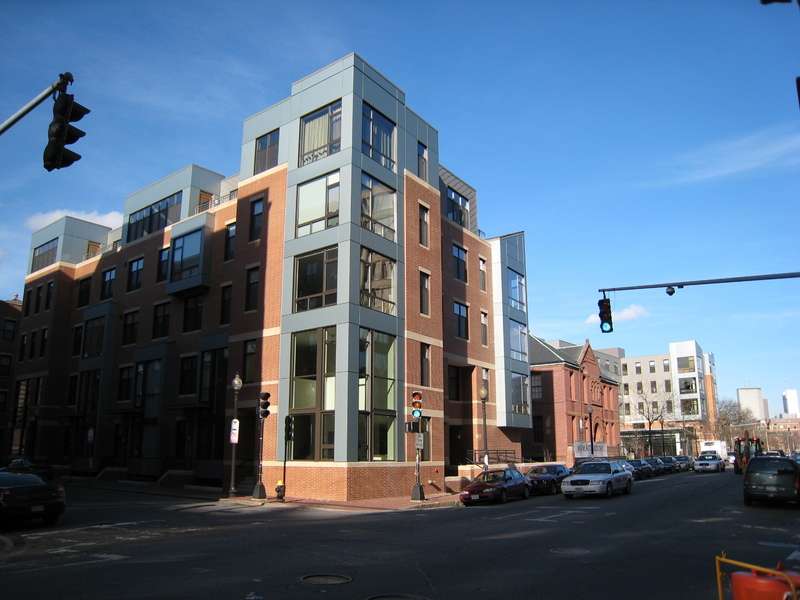

700 Harrison
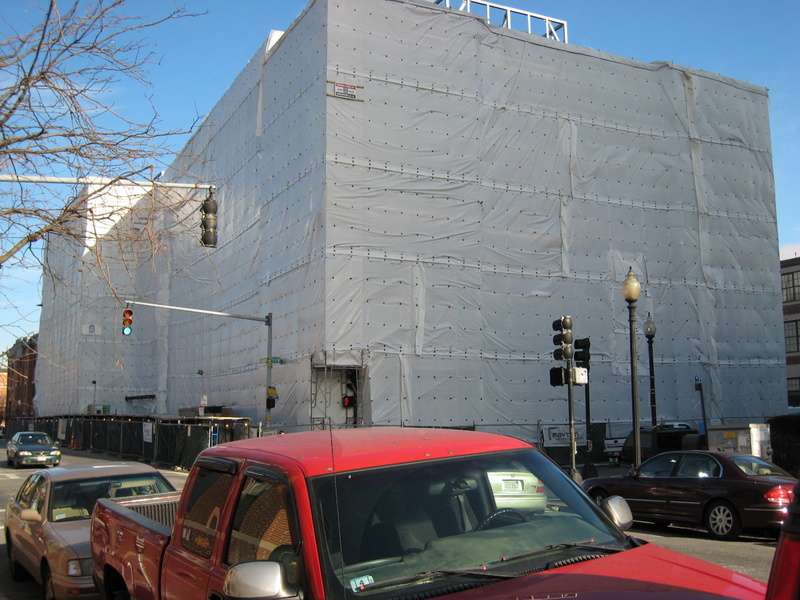
Moakley Pavillion at the BMC

And the rendering of a horrendous addition being built currently. The building is to the right of Moakley in the above picture
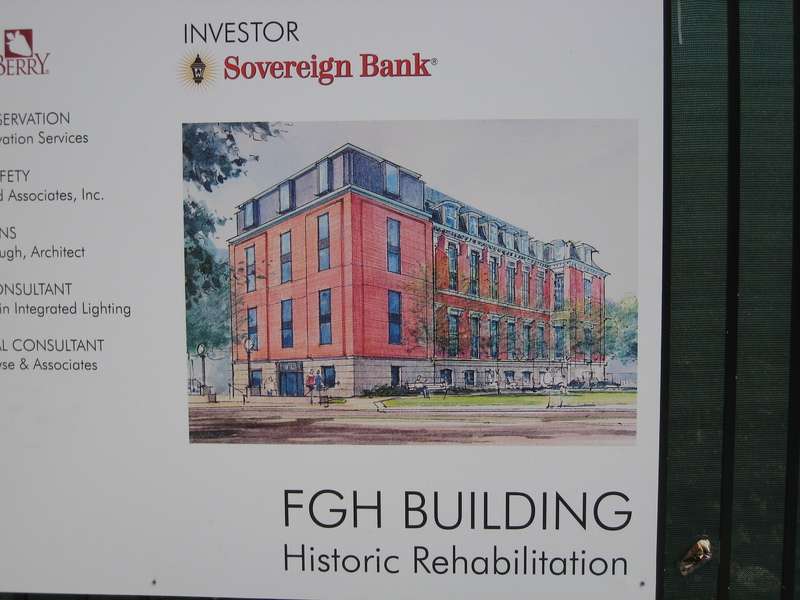
In the early stages of coming down
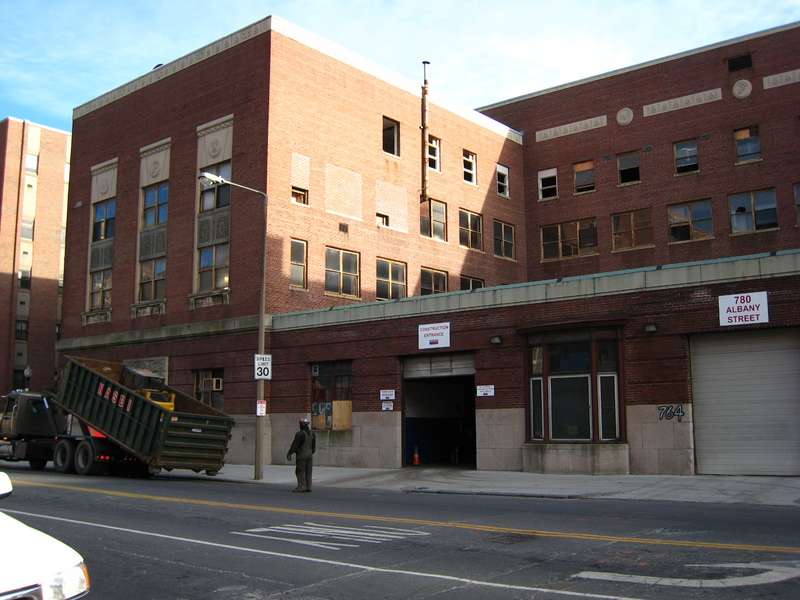
Hampton Inn well under way

blah-ok
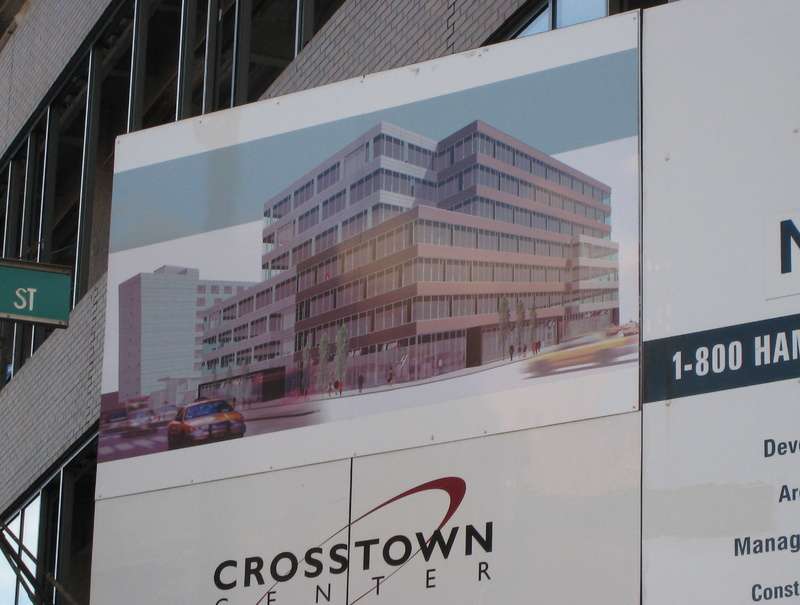
Don't know what's going in here, but it's apparently next to 90 Wareham St
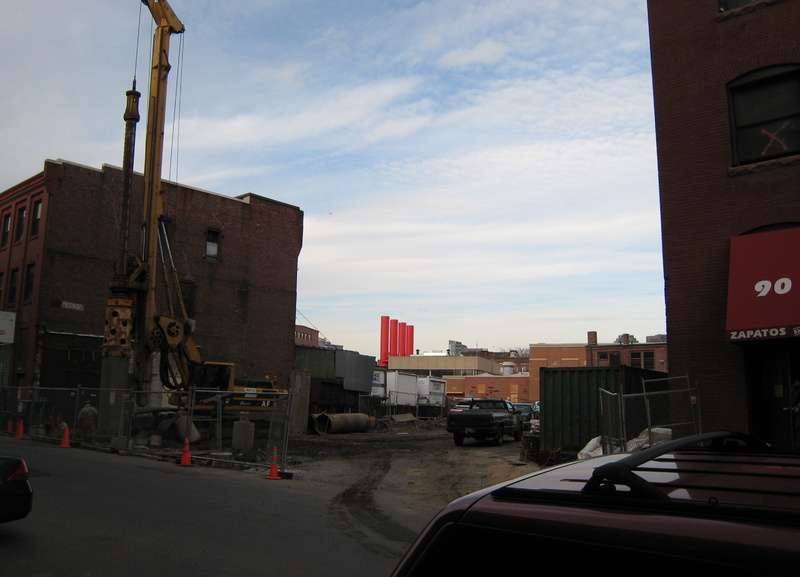
Fairly new construction (to the right) well integrated into the neighborhood

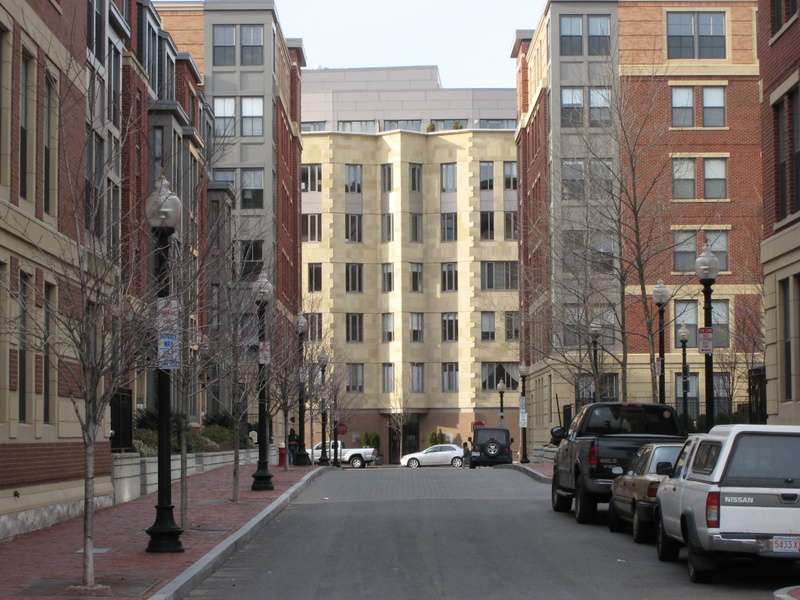
Art Block done


700 Harrison

Moakley Pavillion at the BMC

And the rendering of a horrendous addition being built currently. The building is to the right of Moakley in the above picture

In the early stages of coming down

Hampton Inn well under way

blah-ok

Don't know what's going in here, but it's apparently next to 90 Wareham St

Fairly new construction (to the right) well integrated into the neighborhood


Those last two pictures are from Rollins Square, which was part of a mixed use project funded by the Catholic Church. And in my opinion, the best way to provide affordable housing.
On the opposite side of the church is Cathedral Housing, which was half boarded up only 5 years ago and in my opinion is on of the worst way's to provide affordable housing. (also shown in the Hancock of the day thread)
Under pressure to provide housing, our Mayor foolishly allowed the Boston Housing Authority to fix up these boarded up buildings instead tearing them down. The edges of this 'project' have 2 story structures set back from the street. They had an opportunity to add more units on these lots and could have restored the old street grid.
Now we are left with the biggest eyesore in South End in the middle of all this new construction.
On the opposite side of the church is Cathedral Housing, which was half boarded up only 5 years ago and in my opinion is on of the worst way's to provide affordable housing. (also shown in the Hancock of the day thread)
Under pressure to provide housing, our Mayor foolishly allowed the Boston Housing Authority to fix up these boarded up buildings instead tearing them down. The edges of this 'project' have 2 story structures set back from the street. They had an opportunity to add more units on these lots and could have restored the old street grid.
Now we are left with the biggest eyesore in South End in the middle of all this new construction.
I
IMAngry
Guest
Well, others might disagree about that ....
I think other posters to this board feel that the Cathedral housing project is worthwhile. You might be hearing from them, soon.
I agree that the buildings should be replaced, not because of aesthetics, but because I think low-rise, townhouse buildings work better (although I'm not a sociologist).
One question I have, and maybe it's naivete, is, if we build really nice homes for the poor, are we basically throwing in the towel, and basically making a permanent underclass? Like, we're saying, okay, we'll make your homes nice, so you can stay there, forever! Yay!
Should the city be a landlord?
Perhaps that's a question better asked elsewhere.
I think other posters to this board feel that the Cathedral housing project is worthwhile. You might be hearing from them, soon.
I agree that the buildings should be replaced, not because of aesthetics, but because I think low-rise, townhouse buildings work better (although I'm not a sociologist).
One question I have, and maybe it's naivete, is, if we build really nice homes for the poor, are we basically throwing in the towel, and basically making a permanent underclass? Like, we're saying, okay, we'll make your homes nice, so you can stay there, forever! Yay!
Should the city be a landlord?
Perhaps that's a question better asked elsewhere.
- Joined
- May 25, 2006
- Messages
- 7,033
- Reaction score
- 1,865
Re: Well, others might disagree about that ....
This is actually a sentiment that has been echoed down through the ages. I am currently reading a book now called "Public Housing In Boston: From The Puritans to the Projects" It is dry as hell and the author really doesn't tell a story well but the one thing that really stood out was how every generation knew they needed to do something to house the poor but they for some reason didn't think that building nice, proper homes was the answer.
I have thought a while about this concept and I think that it is a flawed assumption. We (people from above the underclasses) tend so see the poor as something different; there is something wrong with them. They have failed at the game of life as it would seem. Good homes are reserved for people who earn them.
I happen to think that the reason that public housing didn't work in America is this basic assumption which totally disregards a basic sociological belief that a person who is cared about by their society (city, peers, etc) will in turn care about their society. Here in NYC there is a housing project along the East River that, to save money, was designed without exterior walls in the hallways. It uses a chain link fence. It is 30 stories tall. How would you feel if you had to live in a place where when you opened your door you were greeted with not only a cold blast of air off the river but a 30 floor drop down to a busy highway?
When we say "you are poor so you don't deserve a nice home unless you work for it" what we are really saying is "we don't give a fuck about you." How are we to expect that these people are to become productive members of society when society doesn't care about them?
There was an architecture prof. down in Alabama or Mississippi who would, along with his grad students, build homes out of insane materials like old carpet samples and tires. When he was done he would donate them to a homeless or poor family. He got a lot of flack for it because people assumed that poor families either didn't deserve such nice places OR that they would ruin them OR that they, because they didn't earn the house, wouldn't appreciate them the same way someone would if they had earned it. What they found when interviewing the residents was that they were truly happy because they not only had a home (the American dream, right?) but they had one totally unique and they treasured it.
I don't at all mean this as a personal attack at you, IMAngry, but at the prevailing feelings toward the poor in this country. I firmly believe that the only way to build public housing is to build it to the same standards as middle class housing. If we as a society find that too abhorrent an idea to pay for it with public funds then we at least have charity and religious organizations to fall back on, but this is obviously not enough.
IMAngry said:One question I have, and maybe it's naivete, is, if we build really nice homes for the poor, are we basically throwing in the towel, and basically making a permanent underclass? Like, we're saying, okay, we'll make your homes nice, so you can stay there, forever! Yay!
Should the city be a landlord?
This is actually a sentiment that has been echoed down through the ages. I am currently reading a book now called "Public Housing In Boston: From The Puritans to the Projects" It is dry as hell and the author really doesn't tell a story well but the one thing that really stood out was how every generation knew they needed to do something to house the poor but they for some reason didn't think that building nice, proper homes was the answer.
I have thought a while about this concept and I think that it is a flawed assumption. We (people from above the underclasses) tend so see the poor as something different; there is something wrong with them. They have failed at the game of life as it would seem. Good homes are reserved for people who earn them.
I happen to think that the reason that public housing didn't work in America is this basic assumption which totally disregards a basic sociological belief that a person who is cared about by their society (city, peers, etc) will in turn care about their society. Here in NYC there is a housing project along the East River that, to save money, was designed without exterior walls in the hallways. It uses a chain link fence. It is 30 stories tall. How would you feel if you had to live in a place where when you opened your door you were greeted with not only a cold blast of air off the river but a 30 floor drop down to a busy highway?
When we say "you are poor so you don't deserve a nice home unless you work for it" what we are really saying is "we don't give a fuck about you." How are we to expect that these people are to become productive members of society when society doesn't care about them?
There was an architecture prof. down in Alabama or Mississippi who would, along with his grad students, build homes out of insane materials like old carpet samples and tires. When he was done he would donate them to a homeless or poor family. He got a lot of flack for it because people assumed that poor families either didn't deserve such nice places OR that they would ruin them OR that they, because they didn't earn the house, wouldn't appreciate them the same way someone would if they had earned it. What they found when interviewing the residents was that they were truly happy because they not only had a home (the American dream, right?) but they had one totally unique and they treasured it.
I don't at all mean this as a personal attack at you, IMAngry, but at the prevailing feelings toward the poor in this country. I firmly believe that the only way to build public housing is to build it to the same standards as middle class housing. If we as a society find that too abhorrent an idea to pay for it with public funds then we at least have charity and religious organizations to fall back on, but this is obviously not enough.
I
IMAngry
Guest
Thanks for that ...
It was hard to read you response because the page blows up too big due to the huge photos on this page.
I definitely want to read that book.
I am also currently reading "America's Trillion-Dollar Housing Mistake - The Failure of American Housing Policy" - guess which point of view the author takes? Haha.
I'm certainly open to ideas. Unfortunately, I think everyone has taken sides and stuck their feet in the ground, unwilling to budge or even consider alternatives.
I've heard good things about Hope VI (is that right?), so there seems to be at least a couple of initiatives to do things a new way.
Well, I guess I have to go back to what I say, though. Aren't we just creating a permanent underclass, always subsidized?
Again, maybe an argument for another day.
It was hard to read you response because the page blows up too big due to the huge photos on this page.
I definitely want to read that book.
I am also currently reading "America's Trillion-Dollar Housing Mistake - The Failure of American Housing Policy" - guess which point of view the author takes? Haha.
I'm certainly open to ideas. Unfortunately, I think everyone has taken sides and stuck their feet in the ground, unwilling to budge or even consider alternatives.
I've heard good things about Hope VI (is that right?), so there seems to be at least a couple of initiatives to do things a new way.
Well, I guess I have to go back to what I say, though. Aren't we just creating a permanent underclass, always subsidized?
Again, maybe an argument for another day.
Merper
Active Member
- Joined
- May 25, 2006
- Messages
- 255
- Reaction score
- 0
...
if nothing else, building affordable housing at market standards allows future flexibility when/if conditions change around a specific property. Building crap only insures that it can be nothing more than crap in the future.
if nothing else, building affordable housing at market standards allows future flexibility when/if conditions change around a specific property. Building crap only insures that it can be nothing more than crap in the future.
Ron Newman
Senior Member
- Joined
- May 30, 2006
- Messages
- 8,395
- Reaction score
- 13
I doubt that the Cathedral project was 'crap' as originally built. It may have later become 'crap' due to lack of subsequent maintenance.
Merper
Active Member
- Joined
- May 25, 2006
- Messages
- 255
- Reaction score
- 0
...
i dunno Ron... i can certainly accept that aesthetic standards change over time, but the Cathedral Projects resemble a prison complex and although I don't have first hand knowledge, I'm willing to bet that when new, it resembled a new prison complex. Hardly the type of thing that would inspire greatness in its residents.
One could argue that the lack of subsequent maintenance is directly related to this fact.
i dunno Ron... i can certainly accept that aesthetic standards change over time, but the Cathedral Projects resemble a prison complex and although I don't have first hand knowledge, I'm willing to bet that when new, it resembled a new prison complex. Hardly the type of thing that would inspire greatness in its residents.
One could argue that the lack of subsequent maintenance is directly related to this fact.

